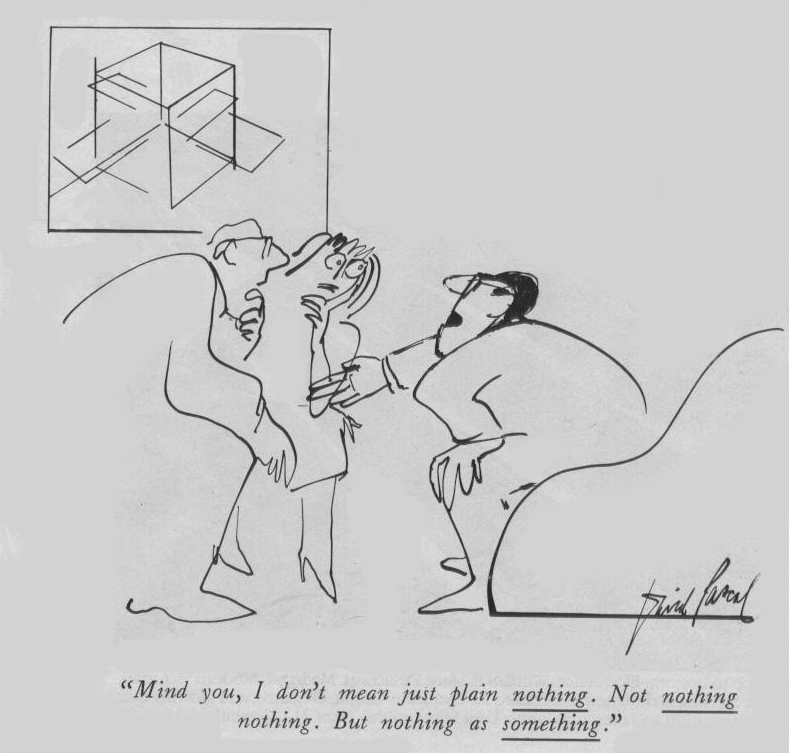help!
In Plantinga's article "On Existentialism" I couldn't find a posative argument for serious actualism, but it looked like rather he was defending it from a couple objections. In any case, his argument against the inference from actualism to serious actualism confused the heck out me. Here's a brief look at some of the confusion.
"(12) Necessarily for any object x, possible world W, and property P, if x has P in W, then x exists in W"
Oh yeah, actualism too:
"(13) There are no nonexistent objects"
After a couple steps he gets
"(15) Whatever has P, exists" (where P is any property)
I get hazy about the point where he derives
"(18) whatever does not exist, exists".
I'm not sure where he gets 18 from. I'm not sure why he's objecting to the argument from actualism to serious actualism in the first place (it doesn't seem to suit is purposes). But playing along, where did 18 come from? And more importantly, why does he have a problem with it? I'm tempted to say that he plugs in the property of non-existence into (15), but this doesn't seem right. At worst it's a trivial statement. By (13) there are no nonexistent objects to fill the first clause of (18) anyway. You certainly can't prove that Zeus exists from (18) for instance. By (13) there is no such thing a Zeus (in the actual world), so it can't be an instance of something that does not exist.
Also, he states that Socrates is one of the things that are, but perhaps not in W. Is he using something other than common domain semantics? Or did I miss something? Priest allows something to BE at world W without existing at W, so I'm (perhaps mistakingly) taking that as standard.
So, given that I don't understand his objection to the inference from actualism to serious actualism, I find myself perplexed to the state of thinking that such an inference is valid. I'm sorry Plantinga!
"(12) Necessarily for any object x, possible world W, and property P, if x has P in W, then x exists in W"
Oh yeah, actualism too:
"(13) There are no nonexistent objects"
After a couple steps he gets
"(15) Whatever has P, exists" (where P is any property)
I get hazy about the point where he derives
"(18) whatever does not exist, exists".
I'm not sure where he gets 18 from. I'm not sure why he's objecting to the argument from actualism to serious actualism in the first place (it doesn't seem to suit is purposes). But playing along, where did 18 come from? And more importantly, why does he have a problem with it? I'm tempted to say that he plugs in the property of non-existence into (15), but this doesn't seem right. At worst it's a trivial statement. By (13) there are no nonexistent objects to fill the first clause of (18) anyway. You certainly can't prove that Zeus exists from (18) for instance. By (13) there is no such thing a Zeus (in the actual world), so it can't be an instance of something that does not exist.
Also, he states that Socrates is one of the things that are, but perhaps not in W. Is he using something other than common domain semantics? Or did I miss something? Priest allows something to BE at world W without existing at W, so I'm (perhaps mistakingly) taking that as standard.
So, given that I don't understand his objection to the inference from actualism to serious actualism, I find myself perplexed to the state of thinking that such an inference is valid. I'm sorry Plantinga!


0 Comments:
Post a Comment
<< Home